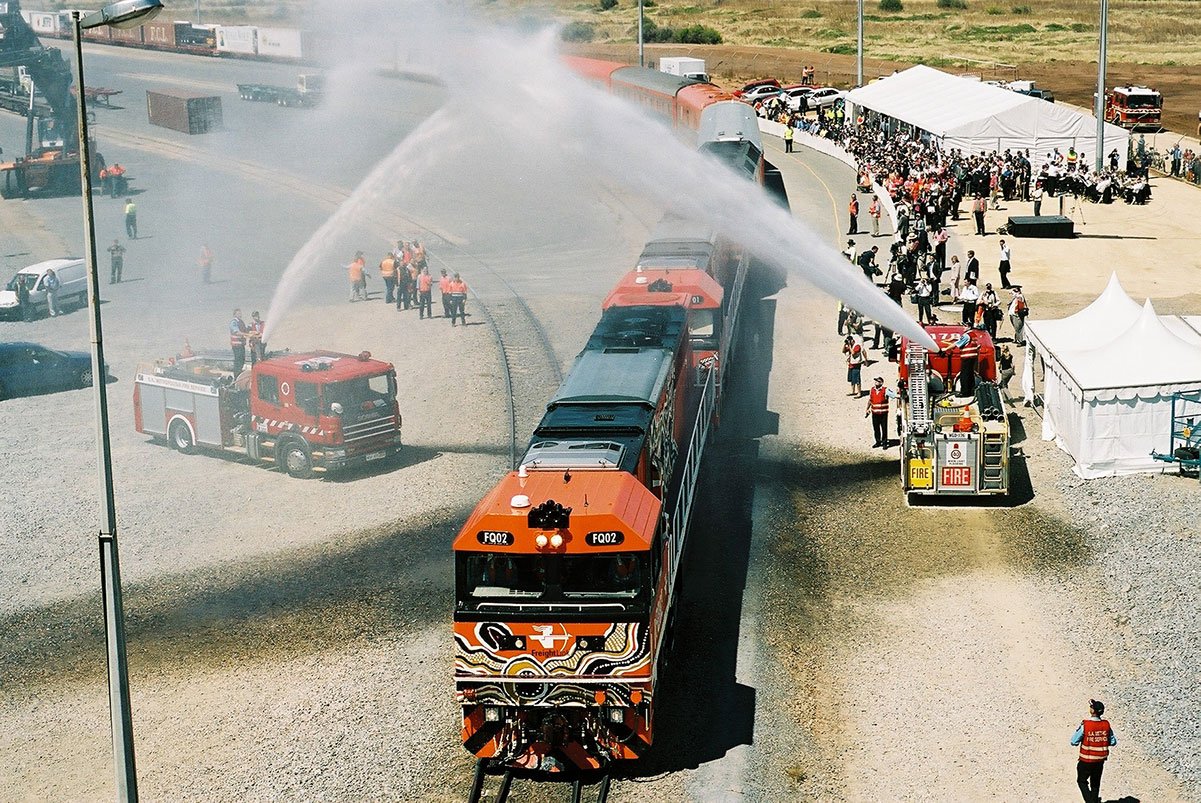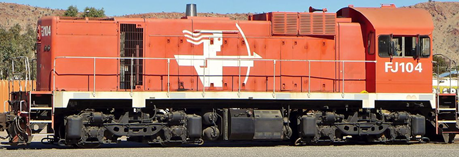History
The project involved:
-
construction of a new 1,420 km stretch of standard gauge line between Alice Springs and Darwin;
-
The lease and maintenance of the existing 830 km line between Tarcoola and Alice Springs;
-
integration of the completed railway line with the Port of Darwin, including a railway embankment and intermodal container terminal;
-
operation of the completed transcontinental railway line for 50 years;
-
153 million cubic metres of earthworks;
-
2 million concrete sleepers produced in Katherine and Tennant Creek;
-
146,000 tonnes of rail;
-
2.8 million tonnes of ballast;
-
90 bridges;
-
culverts at 1500 locations;
-
95.3 per cent local industry participation ($681 M spent in the Northern Territory and $346 M spent in South Australia); and
-
A Build, Own, Operate and Transfer Back (BOOT) scheme, with lease arrangements covering 50 years before the railway is handed back to the Northern Territory and South Australian Governments. This is part of a trend to transfer commercial risk for major infrastructure projects to the private sector.
-
PPP model, government contributes to the cost of building infrastructure to reflect the broader social and economic benefits such infrastructure brings but passes commercial risk to the operator.
The timeline:
The history of the railway from 1876 to 2004.
Tip: to pause, hover your mouse over the timeline. To move forward, move the mouse or click on the next date on the timeline.
The South Australian Government, which then administered the Northern Territory authorised a railway line from Port Augusta to Government Gums.
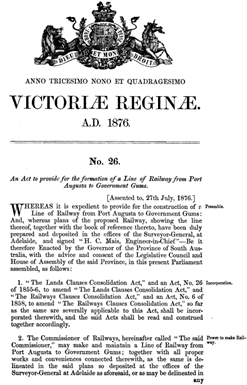
In South Australia Governor Sir William Jervois turned the first sod of the Port Augusta to Government Gums section of a new ‘transcontinental line’ to the north. The Governor’s speech envisaged the line going through the desert to Port Darwin and on to link with Java, Siam and China and “who could tell the full benefits which would accrue from connecting all these colonies with the iron band of a railway”.

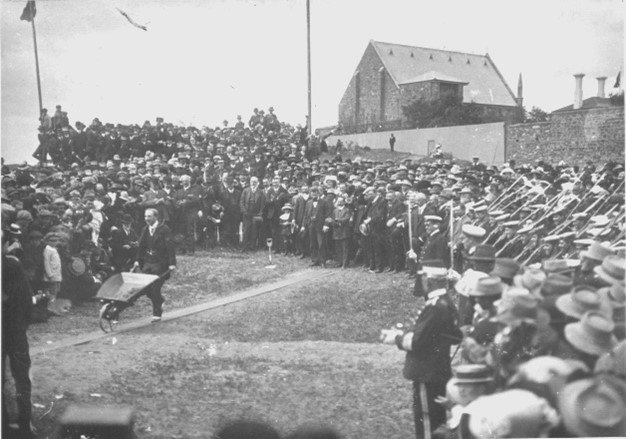
The South Australian Government introduced the Palmerston and Pine Creek Railway Bill to start the Northern Line. Thousands of Chinese and Indian workers did most of the back-breaking work for the Northern Line.

The Northern Line reached Pine Creek opening up the interior and replacing Charles Haimes’ weekly passenger and mail coach from Southport (at the bottom of what is now Middle Arm).
The Northern Line was built primarily to take freight but rarely made a profit. The Pine Creek gold rush died, cattle were not thriving and the Wet season caused constant derailments as embankments washed away, termites ate the wooden sleepers and the Territory’s population declined.
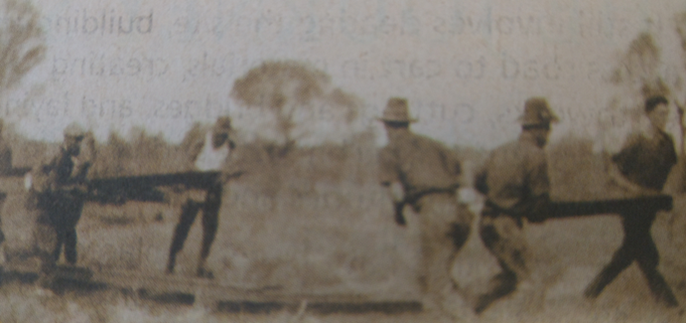
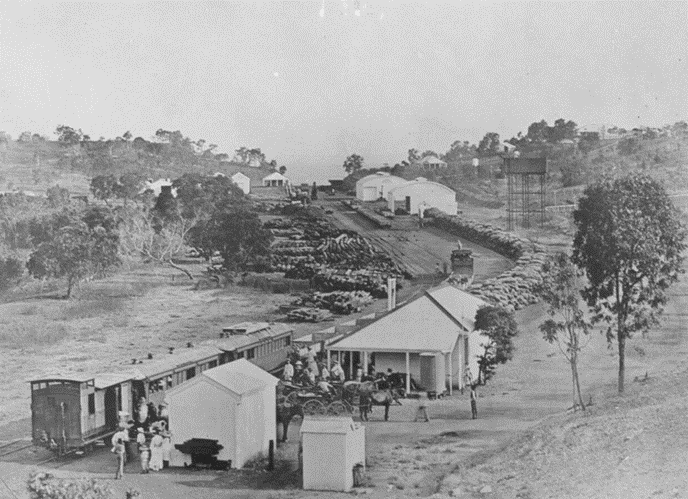
The Southern Line reached Oodnadatta, which remained the railhead until the line reached Alice Springs.

The Commonwealth took over administration of the Northern Territory and the commonwealth commits to complete the railway between Adelaide and Darwin.
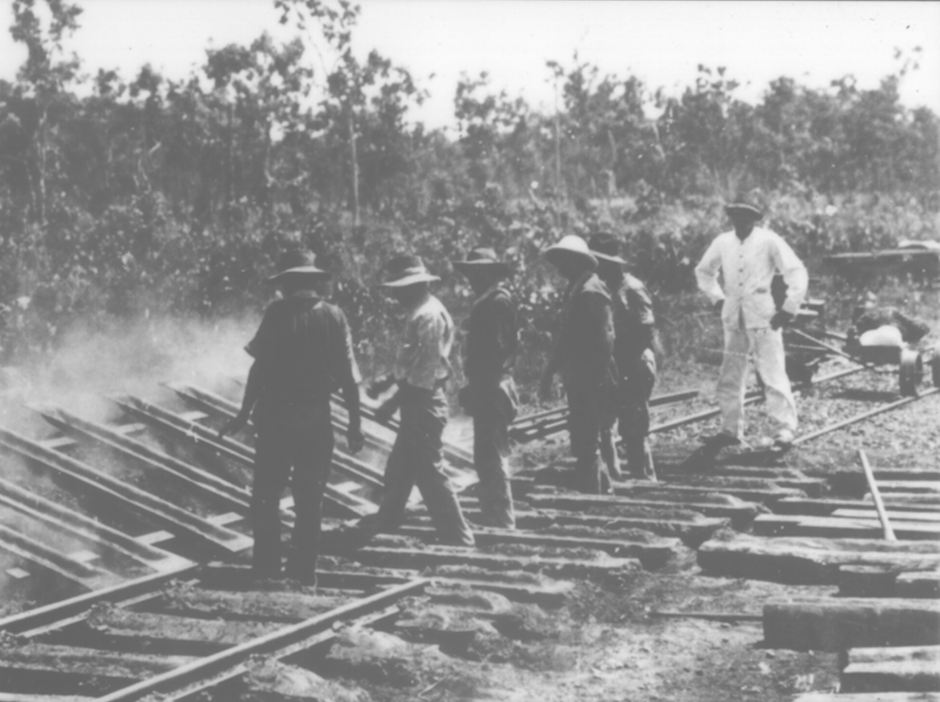

Start of the transcontinental line to Kalgoorlie.
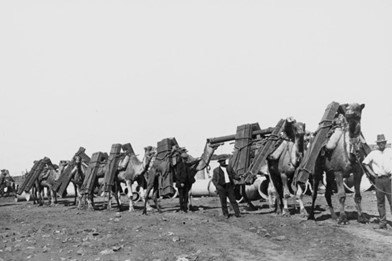

A bridge was built over the Katherine River, largely to relieve unemployment. The railway bridge saw Emungalen close and the growth of Katherine on the new site across the river.
The line was meant to continue on to Daly Waters but when funds ran out in the Depression, it terminated at Birdum, 509 kilometres from Darwin, where nothing except a buffer indicated the end of the line.
The issue of the unfinished line became topical during World War Two when Darwin was used as a strategic defence post, shipping became dangerous, and the only way to move troops across the continent was a long and uncomfortable trip by land. However, this led to the sealing of the Stuart Highway between Alice Springs and Darwin, rather than a new railway.
After the First World War, the line was extended to Emungalen, on the banks of the Katherine River, so Vestey’s could get cattle to its Darwin meat works.The last sections of this line pioneered the use of tractors and early earth-moving equipment. The pressed steel sleepers were the first of their type in Australia.
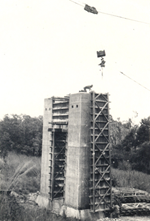
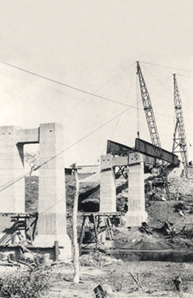
First sod turned at Oodnadatta by Lionel Hill, Commissioner of Roads and Railways, for the last leg of the line.

The Southern Line reached Alice Springs, replacing camel trains and horses to move both people and freight.

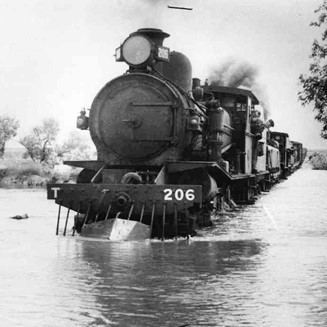
Prime Minister Gough Whitlam turned the first sod gauge line to Alice Springs that by 1980 was to replace the worn-out, flood-prone old standard gauge line through Finke. A blast of dynamite marked the start of a 830 kilometre line designed to provide a more reliable, all-weather service to Alice Springs.
It was this Tarcoola to Alice Springs stretch of rail that would ultimately link with the new 1420 kilometre Alice Springs to Darwin line to become the AustralAsia Railway.

At this stage the Northern Line was in poor condition and making little money. Its death knell was sounded by damage from Cyclone Tracy in 1974, the crash of a Frances Creek ore train in 1972 and declining ore sales saw the Northern Line closed completely.

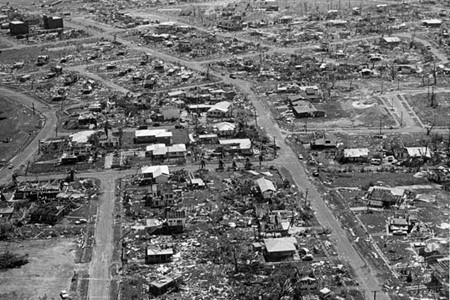
The Northern Territory achieved Self-Government and the campaign began in earnest to get the Australian Government to honour its 1911 promise to build the line. Chief Minister Paul Everingham complained bitterly of ‘the missing link’, saying: “We see it as the greatest single need in the evolution of the Northern Territory. We see it as fundamental to the continued growth and development of the Northern Territory and to a great extent to continued progress of Australia as a whole.”

Prime Minister Malcolm Fraser announced that the rail would be built by 1988. He then lost the election and the new Hawke Government said the size of the deficit ruled out a railway. David Hill, then Chief Executive of NSW Rail, conducted a study on the costs and benefits of completing the line by 1992. He concluded that the investment could not be justified and ‘would constitute a major misallocation of the nation’s resources’.

The Wran Committee on Darwin determined that a railway would be viable by the turn of the century.

The South Australian and Northern Territory Governments signed a Memorandum of Understanding.

The two governments established the AustralAsia Railway Corporation to call for tenders to build the new railway.

The Asia Pacific Transport consortium won the commercial tender to design, construct and operate the railway for a 50-year concession period.
• ADrail is the design and construction contractor; and
• Freightlink the operator.
Financial settlement for the AustralAsia Railway was reached in Sydney to fund the $1.4 billion project.
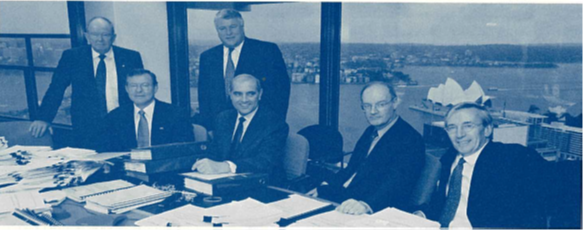
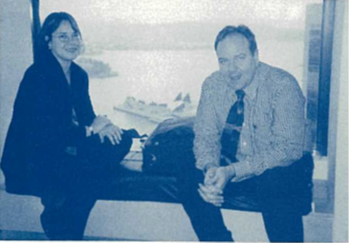
First sod turned by Prime Minister John Howard.
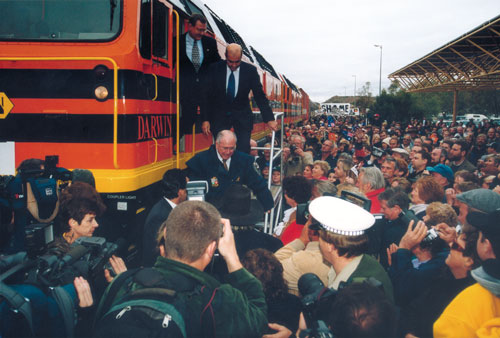
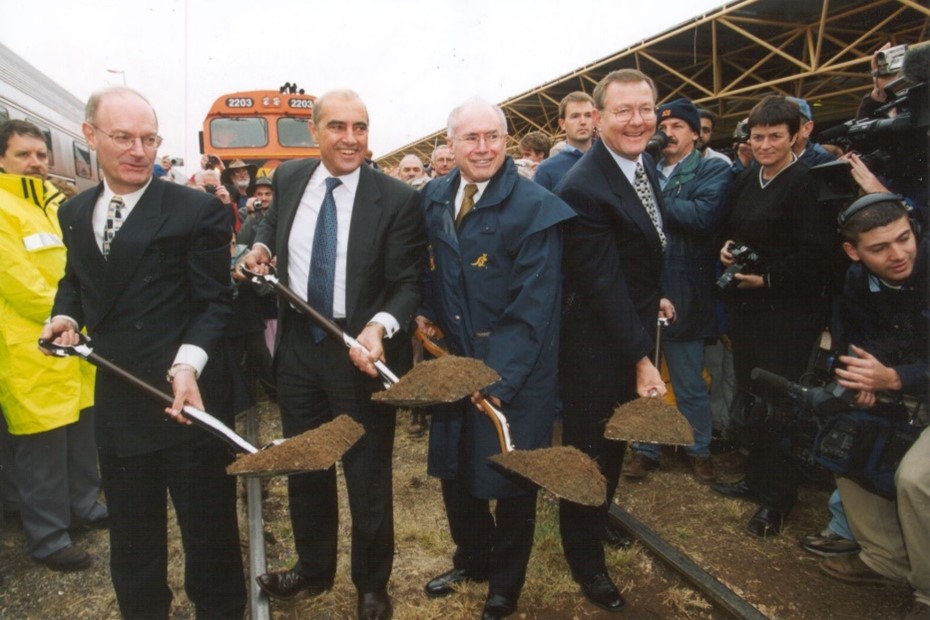
Work began on the Darwin Port Corporation contract for construction of Stage Two of East Arm Wharf.
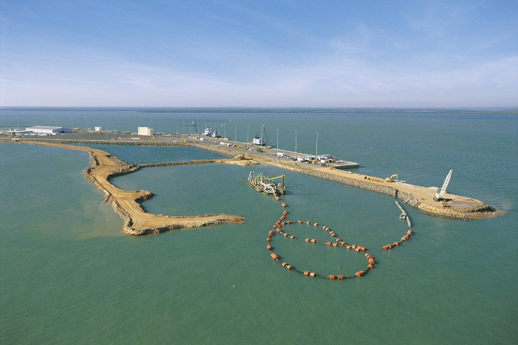
Production of ballast at the Warrego Quarry in Tennant Creek began in early October. Production of ballast began at the Witte Quarry north of Katherine in March 2002.
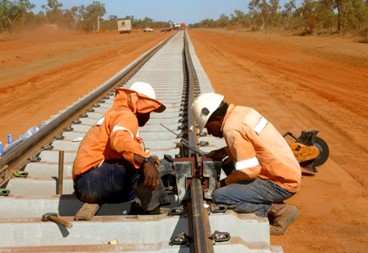
First sleeper pour at Katherine Sleeper Factory. The first sleeper pour at Tennant Creek was on 25 January 2002.
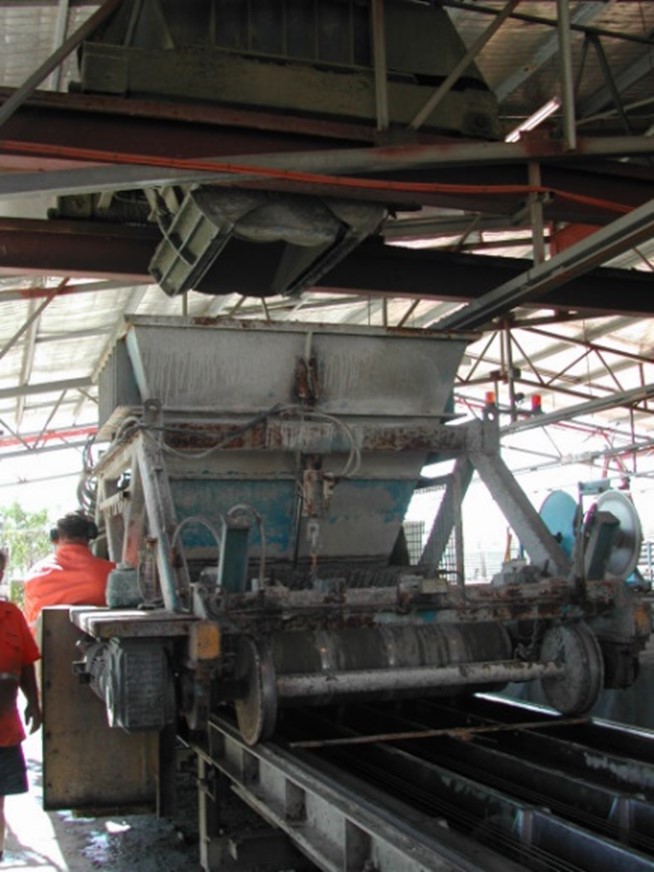

First 2,000 tonnes of the required 145,000 tonnes of steel rail was delivered to Roe Creek, north of Alice Springs.
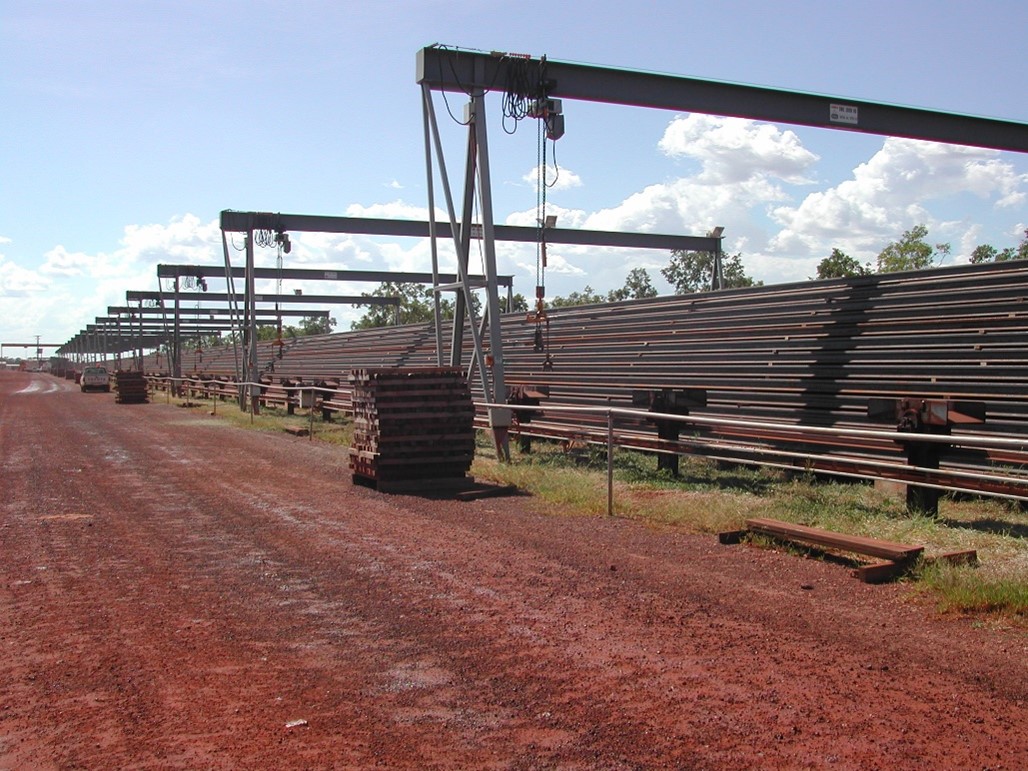
First track laid in Katherine.
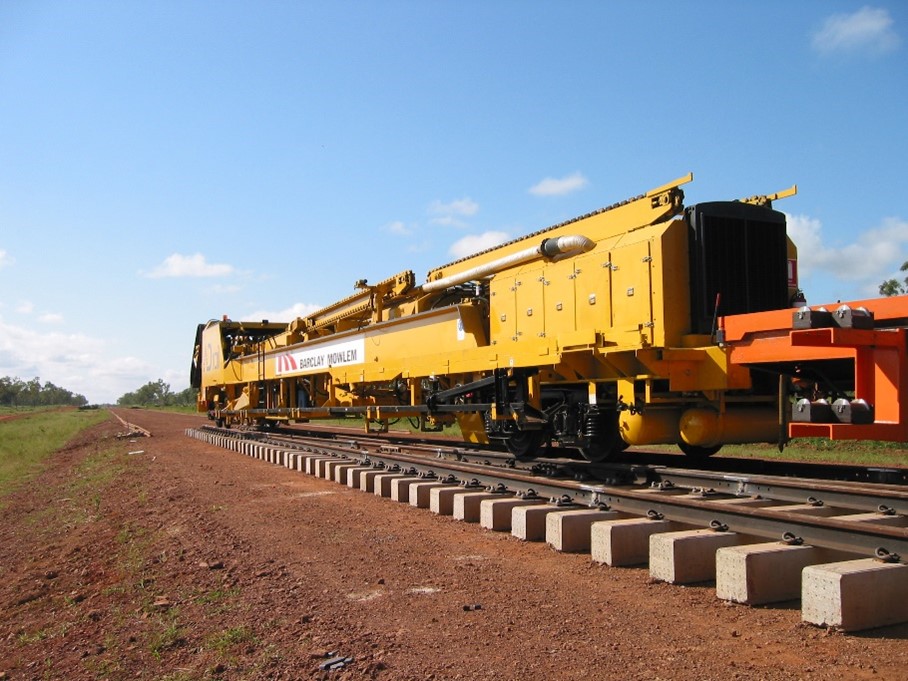
Tracklaying north from Tennant Creek began.
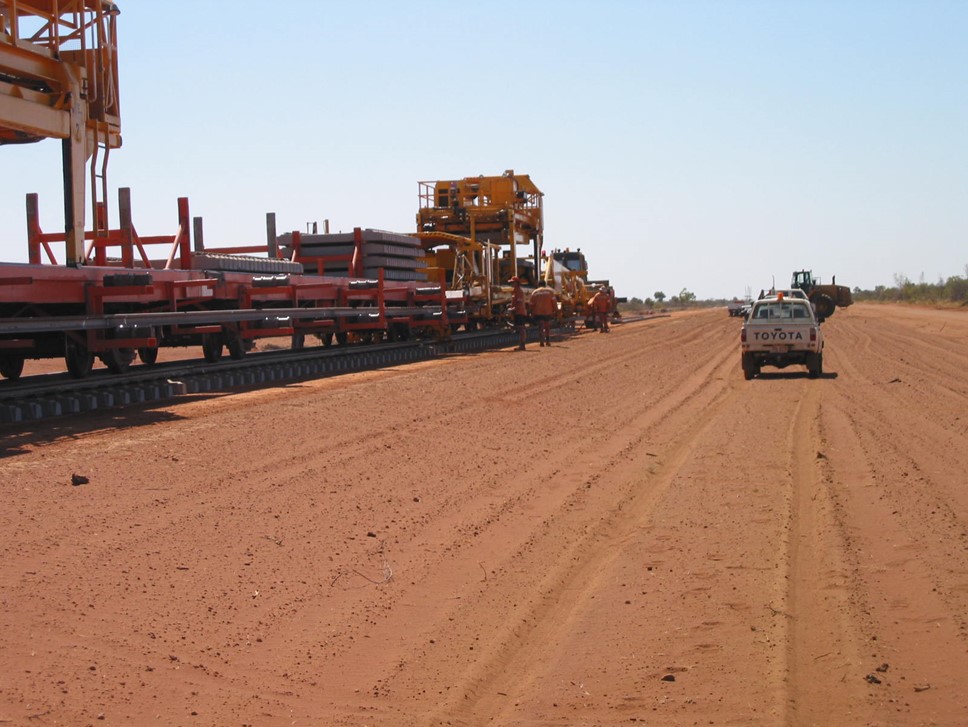
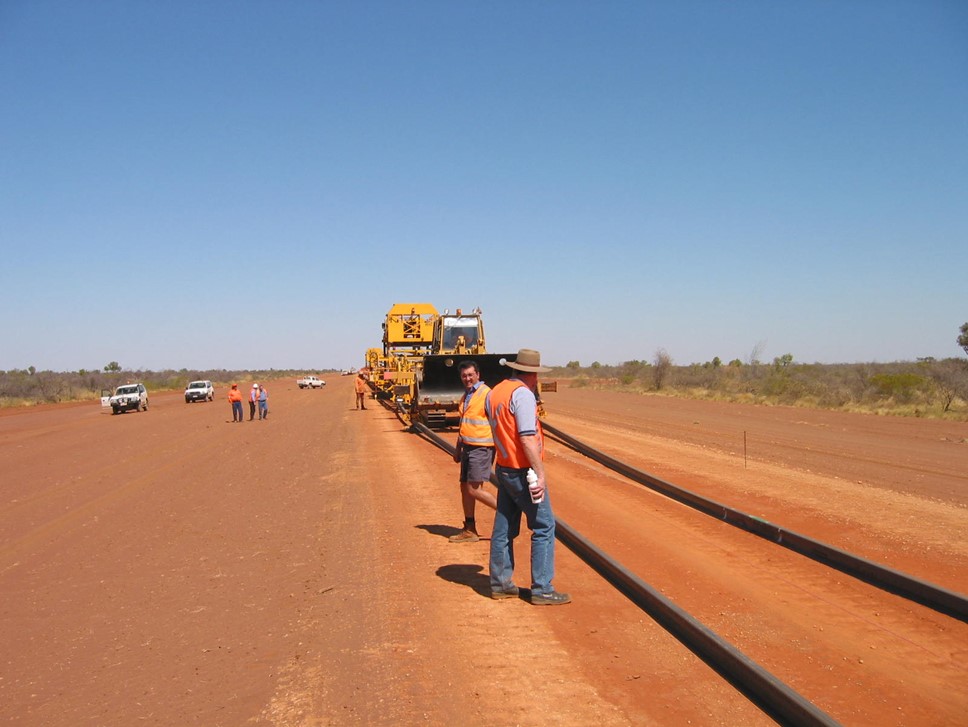
Work commenced on the Elizabeth River Bridge.
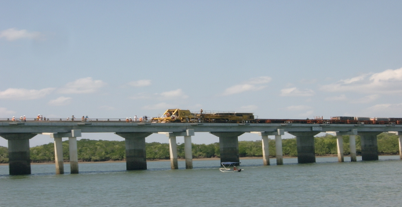
The Buchanan Highway and Adelaide River camps opened.
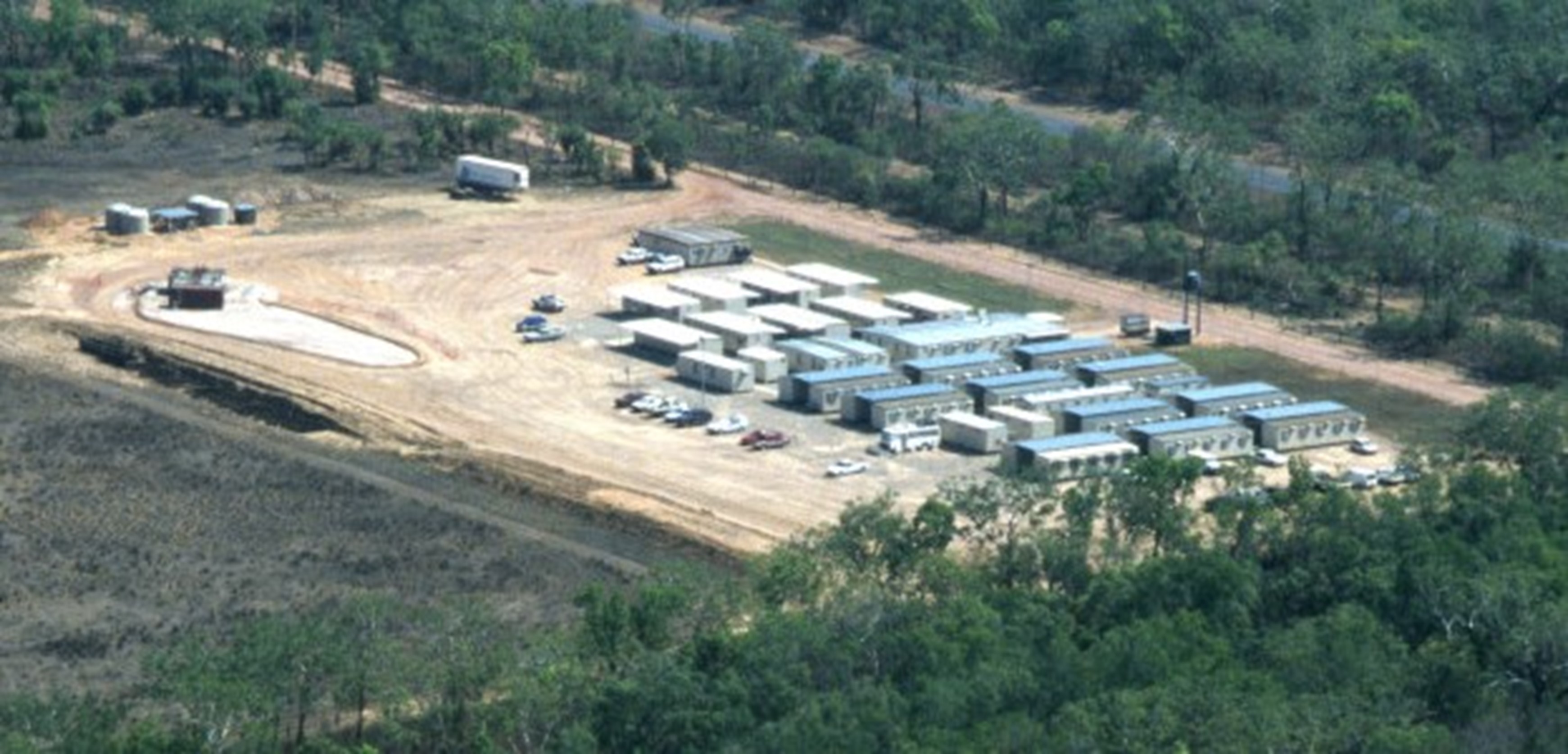
Construction of the Katherine River Bridge is completed.
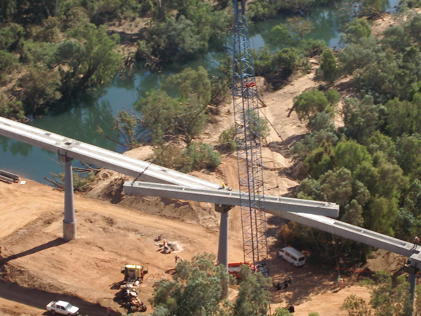
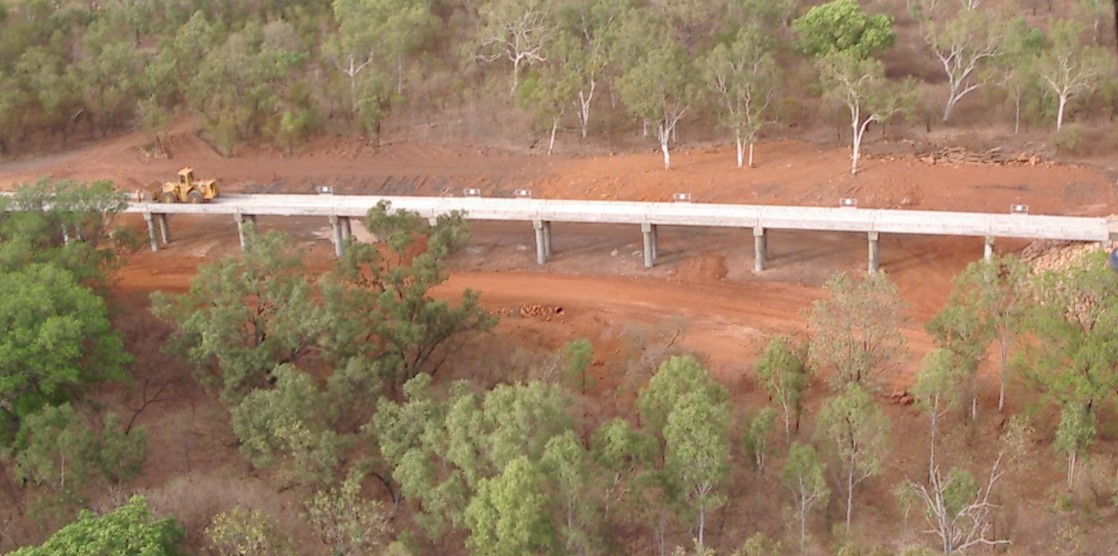
Tracklayer crosses Katherine River Bridge.
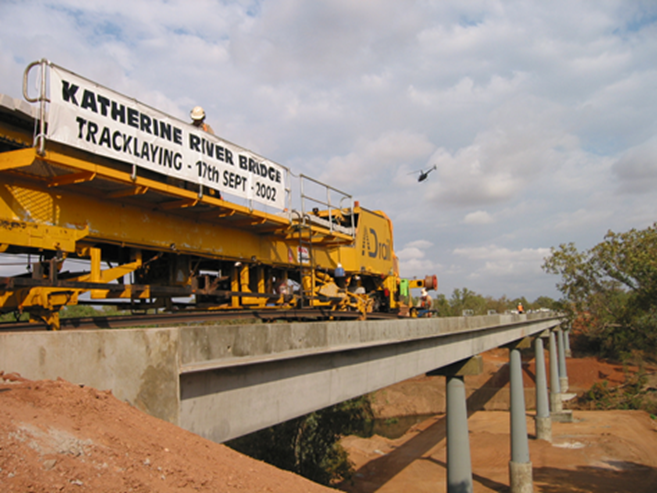
Employment peaked at over 1450 people working directly for ADrail and major contractors.
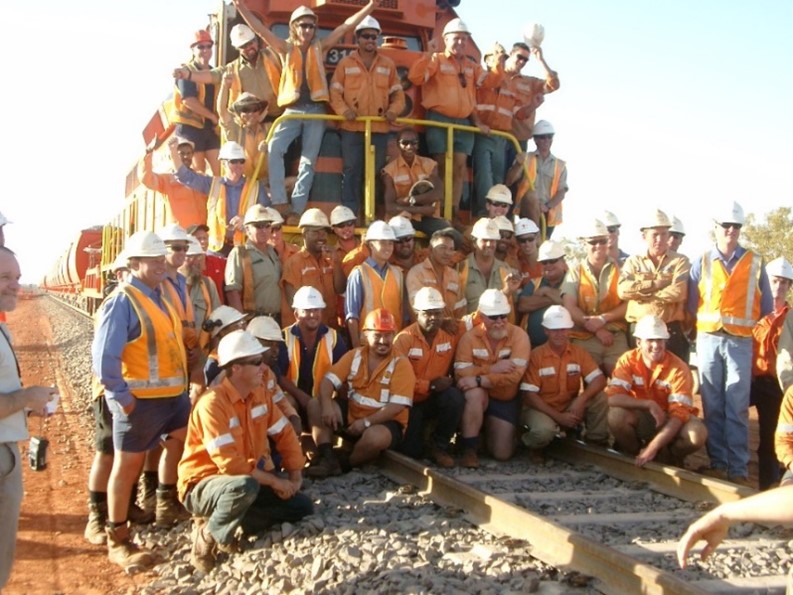
The longest bridge on the project, the Elizabeth River Bridge, south of Darwin, was structurally completed three months ahead of schedule.
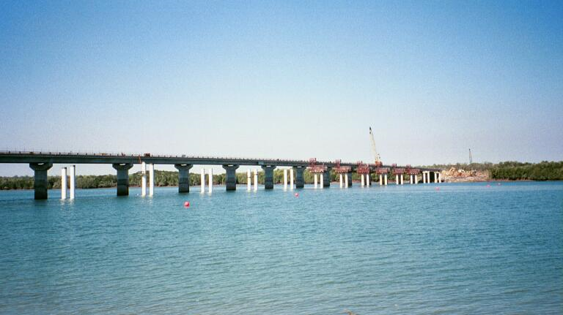
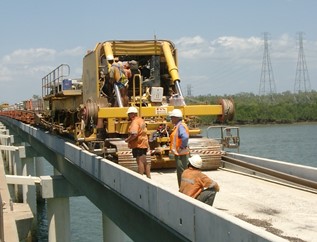
The final Thermit weld, linking the two sections of the line between Katherine and Tennant Creek, was ignited.

Rock cuttings blasted, north of Alice Springs.
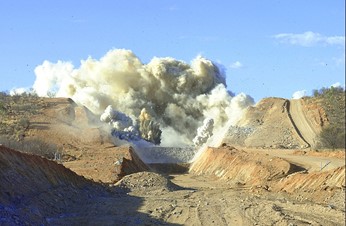
Tracklaying north from Katherine towards Darwin resumed after the wet season.

Tracklayer crossed Fergusson River Bridge.
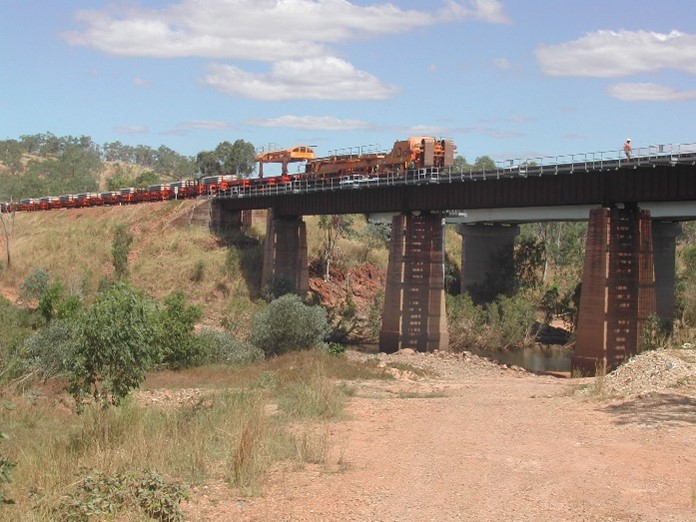
ADrail reached 1,000 kilometres of tracklaying and Adelaide River overpass was opened to traffic.
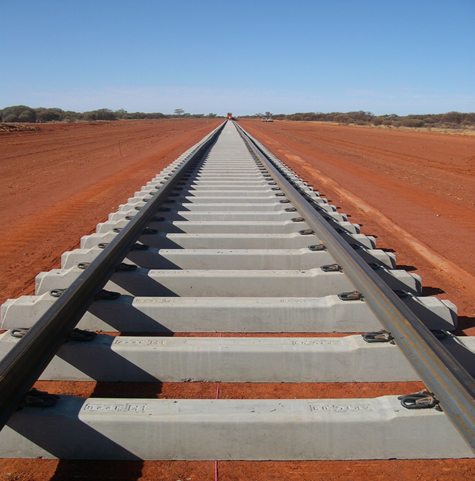
Alice Springs overpass was opened to traffic.
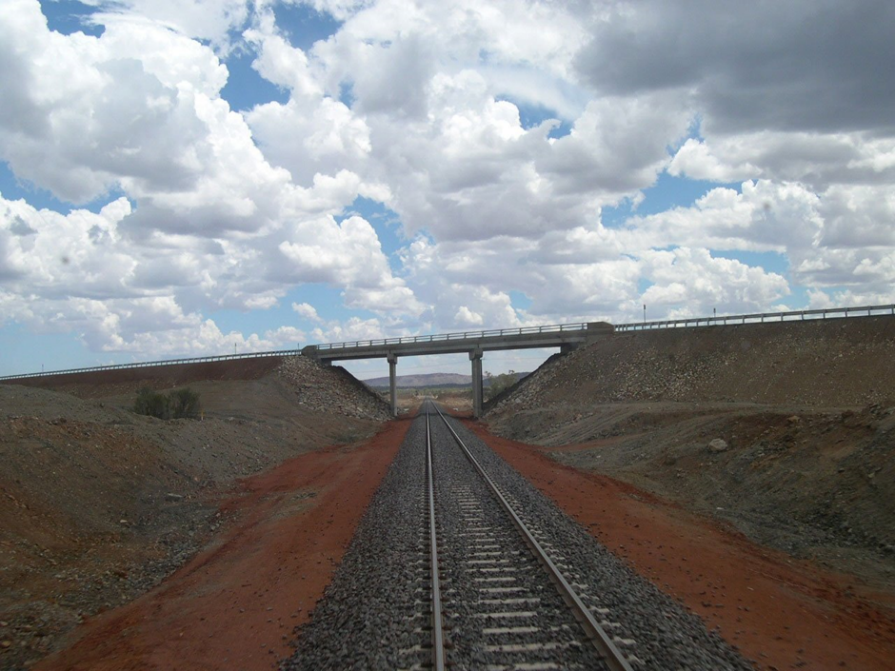
Tracklaying crossed Adelaide River.

Last sleeper pour at Katherine and Tennant Creek factories.
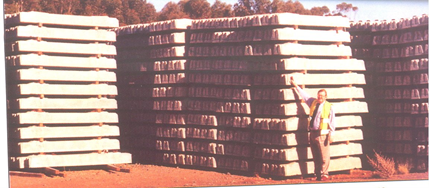
Final track laid at the Port of Darwin. Joining of Tarcoola and AustralAsia Railway in Alice Springs.

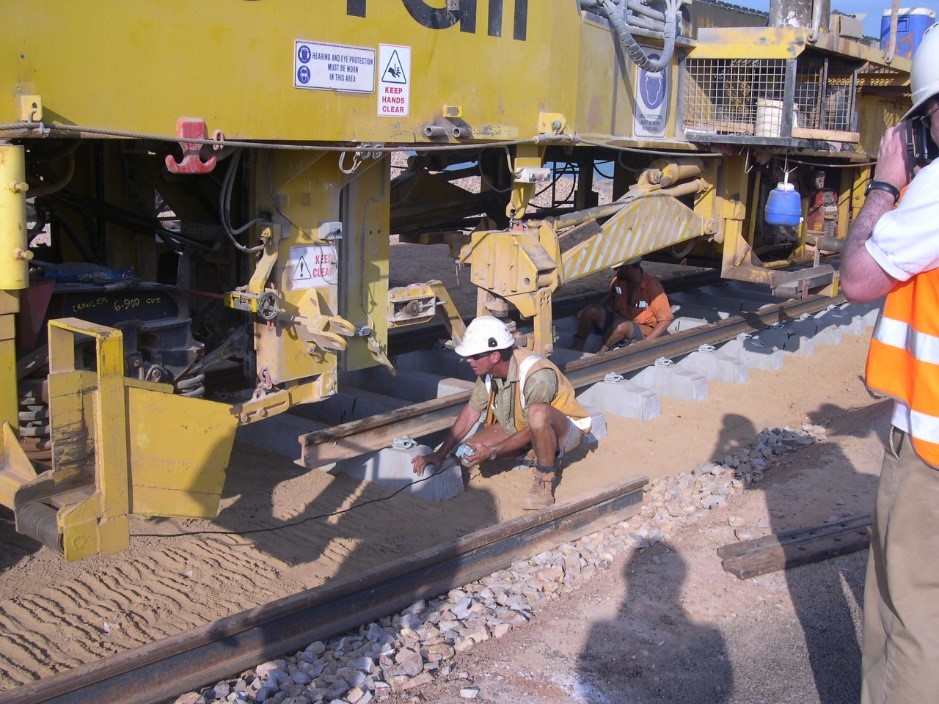
Completion of construction of Berrimah freight yards. Construction of passenger terminals in Tennant Creek, Katherine and Darwin.
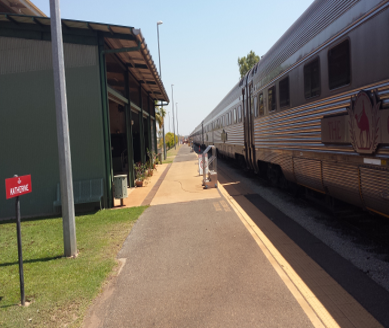
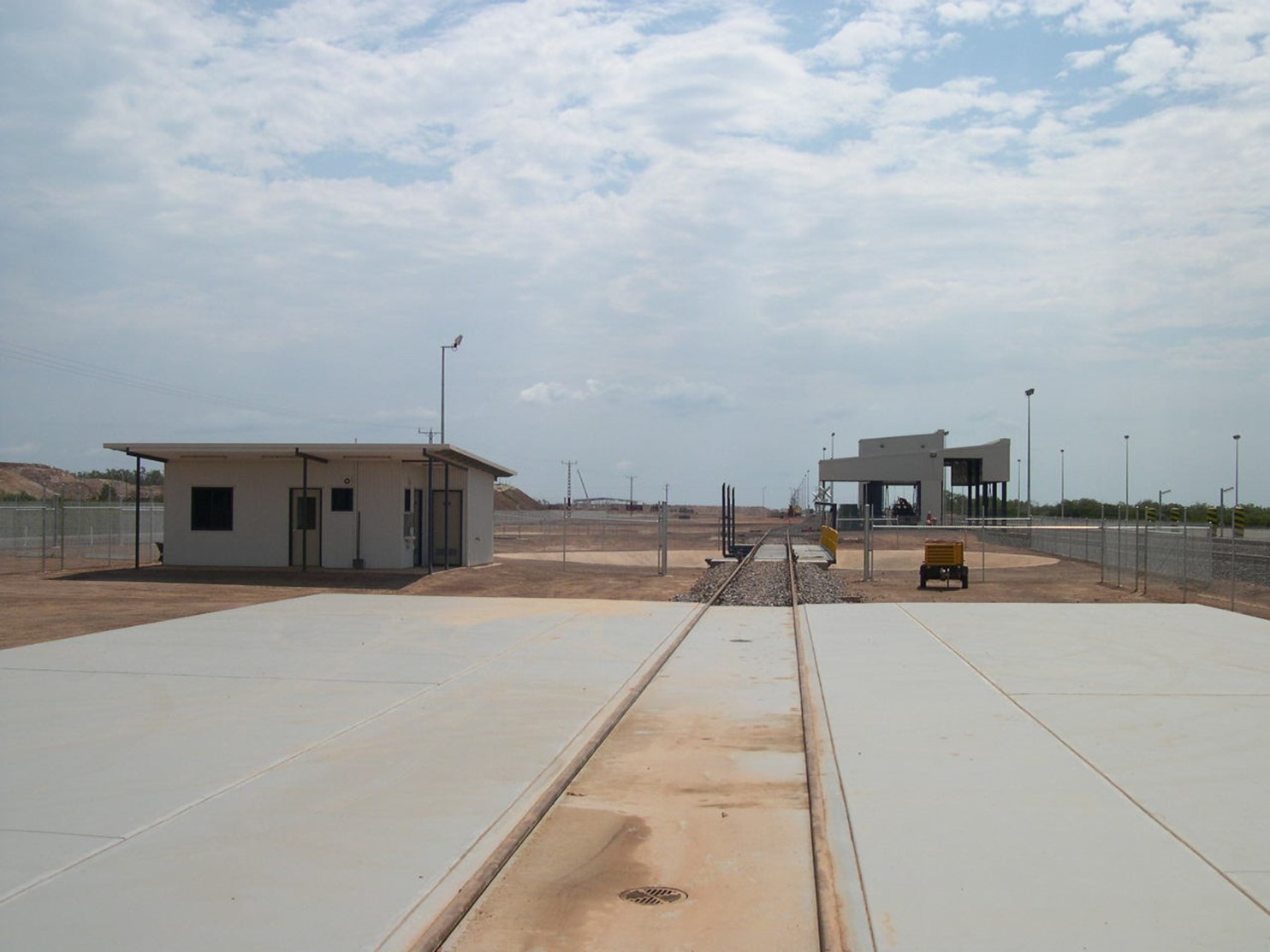
The inaugural freight train left Adelaide on 15 January 2004 and arrived in Darwin on 17 January 2004.
